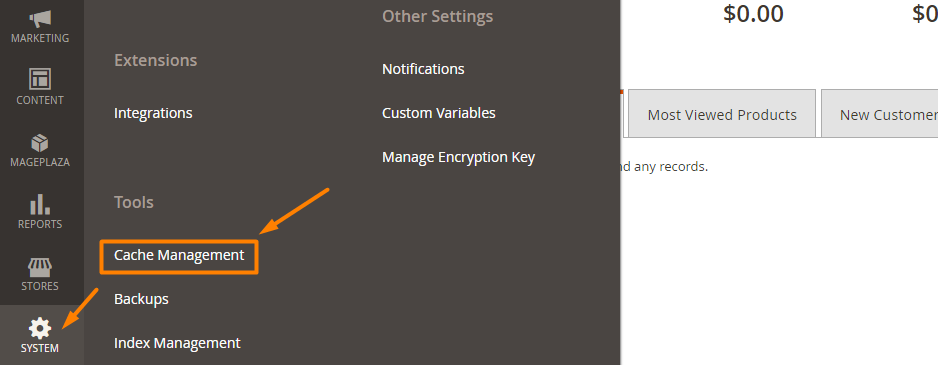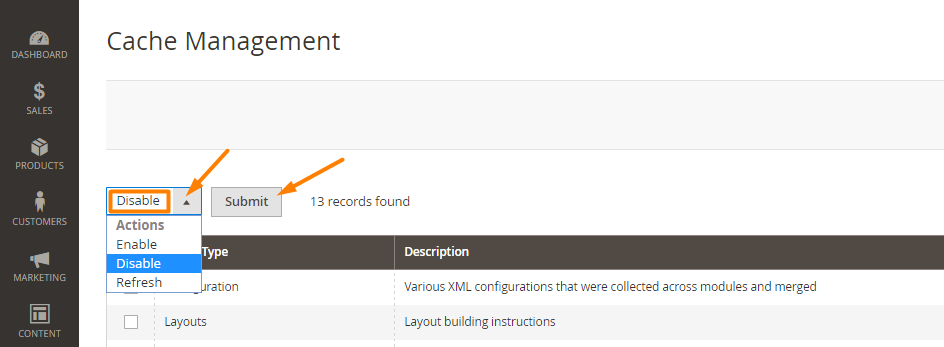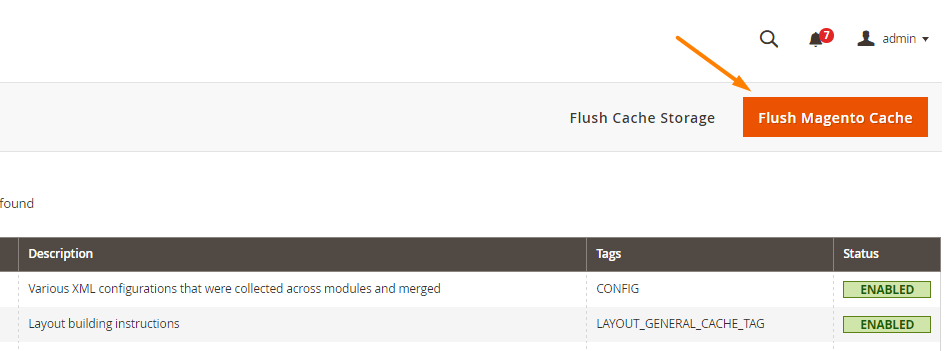Magento 2 Cache Management: 12 Cache Types
With a big catalog of 234+ extensions for your online store
Adding more data means that your website will be possibly overloaded or run slowlier, which can greatly influence customers’ experience. Hence, it is necessary to Manage the Cache to solve this problem. For example, by clearing Cache, you can protect the personal information and help the application run faster.
With different usages, all 12 types of Magento 2 Cache are effective in improving the speed, making your Store perform better.
12 Magento 2 Cache Types
In details, the different categories of Cache are:
Configuration (config): After adapting configuration files, it is necessary to flush them including configuration and store specific settingsLayouts (layout): After adapting layout files, it is necessary to flush them including the compiled page layout from all componentsBlocks HTML output (block_html): After adapting the view layers, it is necessary to flush them including page fragments per blockCollections Data (collections): By Magento, it can automatically flush database queries. However, Custom modules may write entries which make Magento can not clean by itself, in case, Magento can not clean so we need to clean the cacheReflection Data (reflection): API interfaces reflection data will be flushedDatabase DDL operations (db_ddl): it can be automatically flush by Magento, but 3rd party can plus more data, after making custom changes to thedatabase schema, which can clean the cacheEAV types and attributes (eav): The metadata regarding the entity attributes into the cache, in general, it should not flush the cacheIntegrations Configuration (config_integration): Caches the compiled integrations on your store. Clean after adding new or changing existing integrationsIntegrations API Configuration (config_integration_api): Compiled integration APIs configuration of the Store’s IntegrationsPage Cache (full_page): This cache links the HTML pages so it is necessary to clean this type of cache regularlyTranslations (translate): After merging translations from all modules, the merger cache will be cleanedWeb Services Configuration (config_webservice): Caching theWeb API Structure
3 steps to manage Cache in Magento 2
Firstly, you need to log in Magento Admin Dashboard, then follow all these steps
Step 1: Access to Cache Management
- On the left side of menu, choose
System - Select
Cache Management

Step 2: Select the Page Cache
- In the drop-down list Actions , select Disable
- Click the top check box to select all
- Then click Submit

Step 3: Click Flush Magento Cache
- To make sure the cache is cleared completely, click Flush Magento Cache

THINGS TO REMEMBER
- Flushing Cache does not affect other processes or applications because it cleans only the cache that Magento uses; however, it might affect other processes applications using the same storage
The bottom line
Cache management can be the answer for you to upgrade website performance. Understanding 12 types of caches and the steps to manage them in the backend is a must for every online store. If you require extra help in this issue, don’t hesitate to reach out to us.
See you in the next posts!
Related posts:
Looking for
Customization & Development Services?
8+ years of experiences in e-commerce & Magento has prepared us for any challenges, so that we can lead you to your success.
Get free consultantRecent Tutorials

Change Store Email Addresses

Fix Magento 2 'Invalid Form Key. Please refresh the page'

Magento 2 Search Settings: Default Magento vs Mageplaza AJAX Search
Explore Our Products:
People also searched for
- magento 2 caching
- magento 2 cache
- cache in magento 2
- magento cache
- magento 2 cache types
- magento 2 cache management
- cache magento 2
- magento caching
- magento 2 custom cache
- magento cache management
- magento2 cache
- magento cache types
- cache magento
- magento 2 cache tags
- what is cache management
- from where in the admin panel
- can we enable/disable cache?
- magento 2 cache disabled automatically
- magento cache settings
- 2.2.x, 2.3.x, 2.4.x
Stay in the know
Get special offers on the latest news from Mageplaza.
Earn $10 in reward now!




